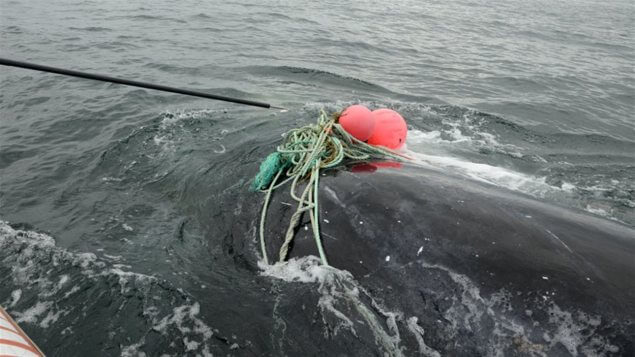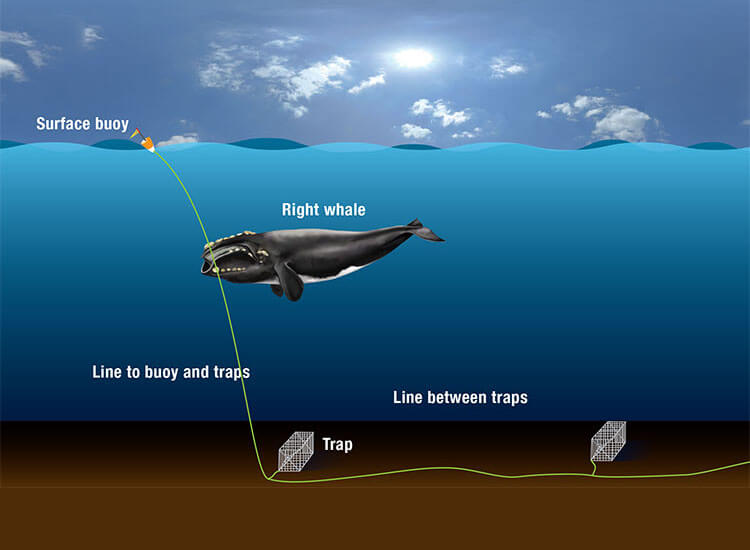On May 13, the first North Atlantic right whales of the season were observed via aerial survey in the Gulf of St. Lawrence. Their return to Canadian waters has meant the implementation of a number of protective measures, including speed restrictions for boats exceeding 20 metres as well as the closure of certain fishing areas. A static speed reduction zone, which represents the region where 90% of right whales were observed in 2018, has been in effect since April 28.
The purpose of these measures is to lower the risk of collisions and entanglements, which are significant threats to the endangered North Atlantic right whale. These measures were adopted in the aftermath of the exceptional mortality incidents of 2017, when 17 right whale carcasses were discovered, including 12 in Canadian waters. Recap of the latest news with regard to right whales…
New technologies for crabbers
The Acadian Crabbers Association will receive funding of over $2 million over three years to test new fishing techniques that might help lower the risk of right whale entanglements. The crabbing industry, a fishery that many coastal communities depend on for their livelihood, involves the use of huge quantities of rope. Because they spend a great deal of time foraging at the surface, right whales are particularly at risk of finding themselves ensnared in these ropes.
The current method consists of tethering the crab traps – which sink to the seabed – to a buoy that floats on the surface. Since last summer, crabbers have been testing new fishing techniques. For example, underwater buoys might represent a viable alternative since they eliminate the need for any rope near the surface. These buoys could be combined with an acoustic system that would enable crabbers to “call” their buoys back to the surface whenever they wish to check their traps.
Adapting to the presence of right whales
Right whales now visit the Gulf of St. Lawrence in large numbers, which was not the case a decade ago. They are believed to be in search of new food sources, as copepods have become less plentiful in their traditional feeding grounds in the Bay of Fundy.
Protective measures were hastily introduced in 2017, then renewed the following year. In 2018, not a single right whale carcass was found in Canada. Is this proof that the imposed restrictions are effective? It’s hard to say. “What we do know is that these efforts will have to be maintained for several years,” explains Robert Michaud in an interview with Radio-Canada. The longevity of right whales and the long intervals between births mean that the results of any conservation measures will take time to become apparent.
Right whales in statistics
- Number of Individuals: 411
- Number of calves counted in 2019: 7
- Number of calves counted in 2018: 0
- Calving interval per female: 10 years
- Proportion of individuals with markings caused by entanglement: 83%
- Speed limit: 10 knots
- Duration of protection of an area following a right whale sighting: 15 days






